Earlier this week we looked after a puppy for a friend. Henrietta is an 8-10 week old mixed breed foster puppy from the RSPCA, and we had her for about 8 hours. Anyone who has recently spent time with a puppy will know that they can be busy little creatures, and keeping them out of mischief feels like a full time job. It also got us thinking about what we expect of these little guys when we bring them home.

When the average Australian household decides to add a dog to the family it would be fair to say that they are expecting the dog to:
- Be friendly to family and friends, including other pets in the home
- Be affectionate and playful, but not rowdy or rough
- Respond to verbal cues such as sit, drop, stay, and come
- Walk nicely on lead, ignoring other dogs, people, and good smells
- Be friendly to all dogs they meet
- Go to the toilet only outside on the grass
- Settle quietly when no one is home, or the family is busy with other activities
There will be some variation amongst households, such as whether the dog will be allowed in the house or not, whether she will be allowed on the furniture or not, etc, but for the most part if a dog can meet the above job description they will fit in well with most families.
Now here’s the problem: it is an exceptionally rare dog that comes with the above skill set already learnt! The average dog will:
- Be social with people she knows, but may bark at strangers (including friends, postmen, tradies, etc)
- Be curious about other pets, perhaps even chasing them if they move quickly
- Crave social contact, resulting in overly-enthusiastic greetings when you get home from work
- Have no understanding of English words such as “Sit” or “No”, no matter how loudly you say them
- Want to investigate every interesting sight, smell, and sound when out walking, at a much faster and more erratic pace than most humans walk
- Be selective about which dogs they want to play with, preferring friends with similar play styles to their own
- Go to the toilet wherever the urge strikes
- Get restless, lonely, or bored when left alone or ignored, and find fun in the form of chewing, chasing, digging, or barking
Henrietta matched the average dog description perfectly! When she arrived at our house she was met by Wilbur and our large macaw, Elmo. There were also smaller pet birds moving around in their cages, and some lizards scuttling around in their enclosures. There were so many things to see, hear, and smell!
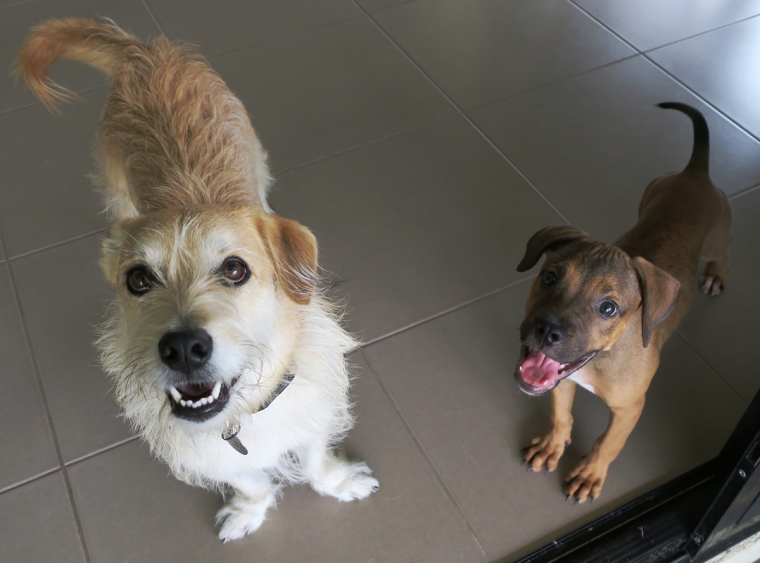
Rather than leaving her to make her best guess about what to do, we called her to follow us outside and walked around on the grass with her until she did a wee. She got lots of praise and some treats for doing the right thing, and then we came inside. She was a little wary of Wilbur, who is bigger than she is and likes to growl when he plays, so Wilbur was on lead and Henrietta got lots of treats whenever she approached him or solicited play. Wilbur got treats too, for lying down quietly while the puppy explored.
In preparation for having a puppy in the home we had already packed away anything we didn’t want her to chew, which meant our shoes were out of reach, and all that was left on the floor were dog toys that were appropriate to chew on. We shut doors to rooms that were out of bounds, and encouraged our puppy to stay nearby by calling her in a happy voice if she started to wander off, and rewarding her with praise and treats when she returned.
The cheeky pup had a real aptitude for jumping onto the couch and climbing along the armrests and back like a mountain goat. Our preference is that furniture is off-limits for dogs in the house, so each time she hopped up we tapped the ground and called her down (using that same happy voice). What happened when she got down? Lots of treats. It is essential that we give any dog we bring home plenty of feedback when they make good choices. Henrietta wasn’t jumping on the couch to be naughty, she was just being an adventurous pup! As the day progressed we could anticipate that she would try to jump up on the couch, and encourage her to stay on the ground to earn treats instead.
As the afternoon wore on Wilbur managed to convince our young friend to play with him. They were having a great time playing bitey-face, chase, and tug-o-war, and we broke up the play with some basic training like sit and drop. Play between dogs can go pear-shaped when they are left to play for long durations (someone always gets grumpy), so it is important to provide the opportunity to settle and rest between play-bouts. Sometimes you will need to enforce rest periods by separating the dogs and giving them something to settle with, such as a stuffed Kong toy.
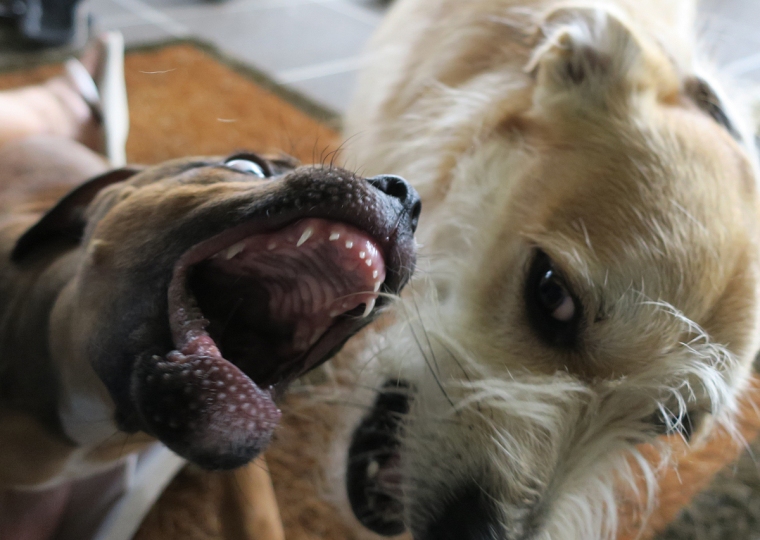
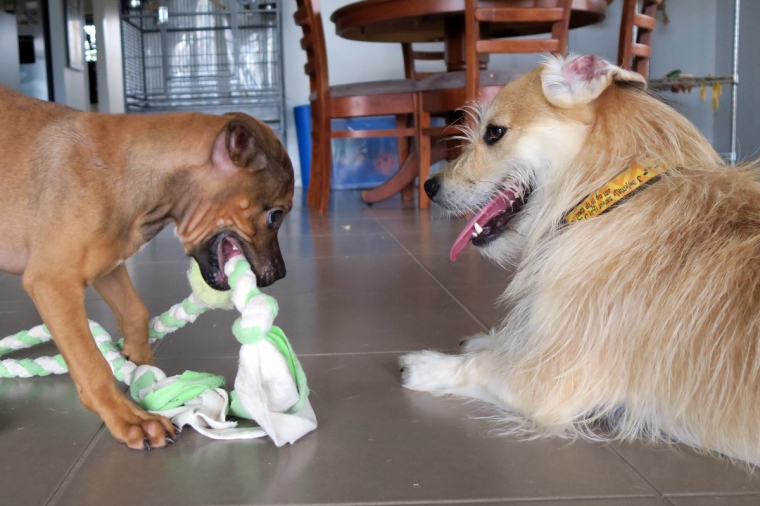
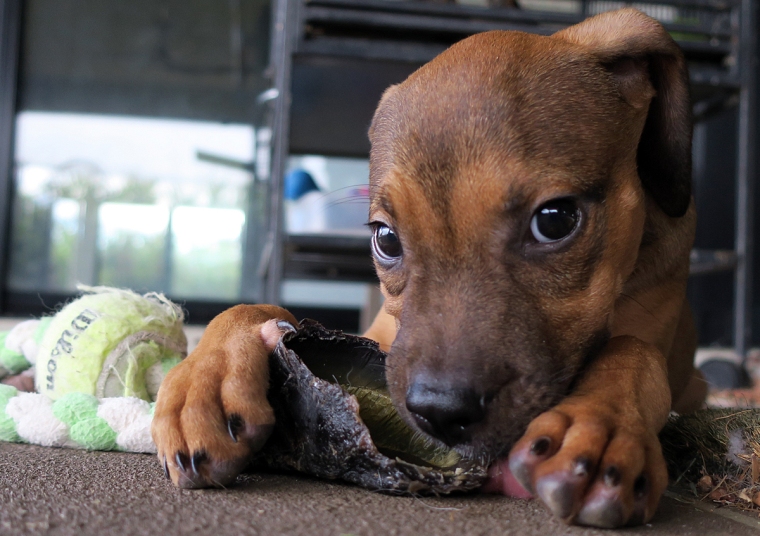
To finish our day together we took Henrietta along to an introductory session (no other puppies) at Puppy Preschool. This meant we needed her to be on lead, which she hasn’t had much experience with! When we clipped a lead to her collar we called her to follow us without letting the lead go tight, and gave her lots of treats as she followed us around. Some puppies get spooked when they feel a tight lead on their collar, so it is very important to make an effort to keep that lead loose when you first introduce it to your dog (that’s right, you make the effort, not your dog).
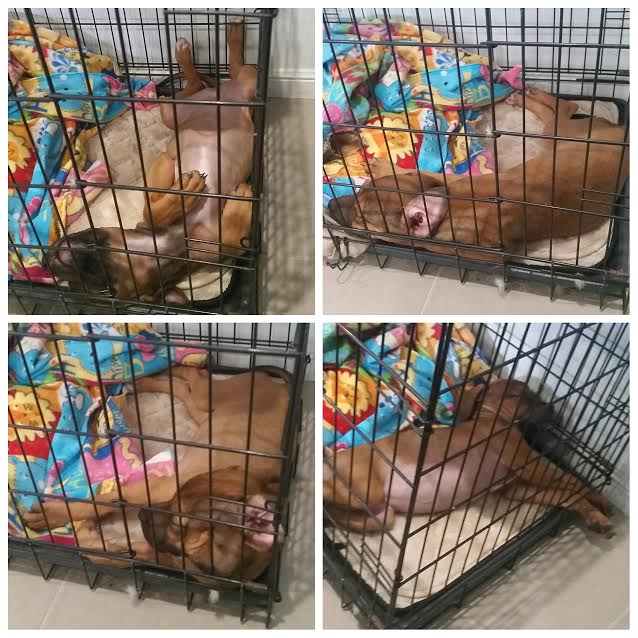
Overall our day consisted the opportunity to play, toilet, and rest, and at the end of our afternoon together we sent a very sleepy puppy back to her foster home! Whether you bring home a puppy or an adult dog, and whether it is forever or for a few hours, it is up to you to ensure that you set your new housemate up for success. Dogs simply don’t come preset to behave the way we like, but they are ready to learn. Make it easy for your new dog (or old dog) to make good choices, and be ready to provide them with lots of goodies when they do things you like. Having a plan of attack before you bring a dog home will make life a lot easier for everyone!
